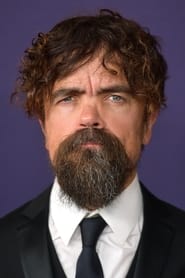
Ask Your Own Question
What is the plot?
In "Histories & Lore: The Free Folk," the episode begins with a sweeping view of the vast, icy expanse beyond the Wall, setting the stage for the harsh and unforgiving world inhabited by the Free Folk, also known as the Wildlings. The narrator introduces the Free Folk as a group of people who live beyond the Wall, emphasizing their independence and disdain for the Night's Watch and the Seven Kingdoms. The tone is somber, reflecting the struggles and resilience of these people.
The narrative shifts to the origins of the Free Folk, detailing their nomadic lifestyle and their connection to the land. They are depicted as a diverse group, consisting of various clans and tribes, each with their own customs and traditions. The narrator explains that the Free Folk do not recognize the authority of the Iron Throne, valuing their freedom above all else. This independence is a central theme, highlighting their fierce spirit and the challenges they face from the encroaching forces of the Night's Watch.
As the story unfolds, the episode delves into the relationships among the Free Folk, particularly focusing on their leaders. The character of Mance Rayder, known as the King-Beyond-the-Wall, is introduced. He is portrayed as a charismatic and unifying figure who has brought together the disparate clans of the Free Folk under his leadership. The narrative explores Mance's motivations, revealing his desire to protect his people from the threat of the White Walkers and the Night's Watch. His leadership is marked by a blend of strength and diplomacy, as he navigates the complexities of uniting various factions.
The episode also highlights the Free Folk's way of life, showcasing their survival skills and adaptability in the harsh environment. Scenes depict their hunting practices, communal living, and the importance of family and kinship ties. The emotional weight of their struggles is palpable, as the Free Folk face constant threats from both the elements and their enemies. The narrator emphasizes their resilience, illustrating how they have thrived despite the odds stacked against them.
A significant portion of the episode is dedicated to the Free Folk's encounters with the Night's Watch. The tension between the two groups is palpable, as the Free Folk view the Night's Watch as oppressors. The narrative recounts key confrontations, including skirmishes and raids, which highlight the animosity and misunderstandings that exist between them. The Free Folk's motivations for raiding are explained as a means of survival, driven by desperation and the need to secure resources.
The episode culminates in a discussion of the impending threat posed by the White Walkers. The Free Folk's awareness of this danger is explored, revealing their belief that the Night's Watch is ill-prepared to face such a formidable foe. Mance Rayder's determination to unite the Free Folk against this common enemy is underscored, showcasing his leadership qualities and the hope he instills in his people. The emotional stakes are raised as the Free Folk prepare for the challenges ahead, driven by a sense of urgency and the need to protect their way of life.
In the closing moments, the narrator reflects on the legacy of the Free Folk, emphasizing their enduring spirit and the ongoing struggle for freedom. The episode ends on a note of uncertainty, leaving viewers with a sense of the challenges that lie ahead for the Free Folk as they confront both internal divisions and external threats. The visual imagery of the icy landscape serves as a stark reminder of the harsh realities they face, encapsulating the essence of their existence beyond the Wall.
What is the ending?
In "Histories & Lore: The Free Folk," the episode concludes with a deep exploration of the Free Folk, also known as the Wildlings, and their way of life beyond the Wall. The narrative emphasizes their struggles against the Night's Watch and the harsh realities of their existence in the North. The episode does not have a traditional ending with a climax or resolution but instead serves as a comprehensive overview of the Free Folk's history, culture, and their relationship with the Seven Kingdoms.
As the episode unfolds, it begins with a vivid depiction of the Free Folk's nomadic lifestyle. The camera sweeps over the vast, icy landscapes of the North, showcasing the rugged terrain they inhabit. The narration introduces the Free Folk as a proud and independent people, living outside the constraints of the Seven Kingdoms. They are portrayed as fierce warriors, skilled in survival, and deeply connected to the land.
The narrative then shifts to their conflicts with the Night's Watch. The tension between the two groups is palpable, as the Free Folk are often seen as a threat to the realm. The episode highlights key figures among the Free Folk, such as Mance Rayder, their charismatic leader, who unites various clans under his banner. Mance's motivations are rooted in a desire for freedom and safety for his people, as they face the encroaching dangers of the White Walkers.
Scenes depict the Free Folk's struggles against the harsh winter and their resourcefulness in hunting and gathering. The emotional weight of their plight is evident as they face starvation and the constant threat of violence. The narration emphasizes their resilience and determination to survive against overwhelming odds.
As the episode progresses, it delves into the relationships within the Free Folk, showcasing their communal bonds and the importance of family and loyalty. The dynamics between characters reveal their shared history and the sacrifices they make for one another. The emotional stakes are high, as the Free Folk grapple with their identity and the looming threat of extinction.
The episode concludes with a reflection on the Free Folk's future. The narrator speaks of their ongoing struggle for acceptance and the hope that one day they might find a place within the realm. The final scenes evoke a sense of uncertainty, leaving viewers with a poignant reminder of the challenges that lie ahead for the Free Folk as they navigate a world that often seeks to marginalize them.
In summary, "Histories & Lore: The Free Folk" serves as a rich tapestry of the Free Folk's existence, highlighting their culture, conflicts, and the emotional depth of their characters, ultimately leaving the audience with a sense of the ongoing struggle for survival and acceptance in a harsh world.
Is there a post-credit scene?
In the episode "Histories & Lore: The Free Folk" from the "Game of Thrones" specials, there is no post-credit scene. The episode focuses on the lore and history of the Free Folk, also known as the Wildlings, who inhabit the lands beyond the Wall. It delves into their culture, beliefs, and the challenges they face in a harsh and unforgiving environment. The narrative is presented through a series of animated sequences and voiceovers, providing insights into their way of life, their relationship with the Night's Watch, and their struggles against the White Walkers. The episode concludes without any additional scenes or content after the main feature.
What are the main beliefs and customs of the Free Folk?
The Free Folk, also known as the Wildlings, have a deep connection to the land and nature, believing in the spirits of the earth and the importance of living freely outside the constraints of the Wall. They practice a form of animism, revering the Old Gods and the natural world, which shapes their way of life and community structure.
Who are the key leaders among the Free Folk?
Key leaders among the Free Folk include Mance Rayder, the King-Beyond-the-Wall, who unites various clans under his leadership, and Tormund Giantsbane, a fierce warrior and loyal supporter of Mance. Their leadership styles reflect the Free Folk's values of strength, loyalty, and freedom.
What is the significance of the Wall to the Free Folk?
The Wall represents both a physical barrier and a symbol of oppression for the Free Folk. It separates them from the Seven Kingdoms and embodies the conflict between the Wildlings and the Night's Watch, as the Free Folk seek to live freely without the constraints imposed by the Wall and its guardians.
How do the Free Folk view the Night's Watch?
The Free Folk generally view the Night's Watch with disdain and hostility, seeing them as oppressors who enforce the Wall's separation. They believe the Night's Watch is a symbol of the unjust rule of the Seven Kingdoms, and this animosity fuels many of their conflicts.
What role does Jon Snow play in the relationship between the Free Folk and the Night's Watch?
Jon Snow serves as a crucial bridge between the Free Folk and the Night's Watch. His experiences with the Wildlings, particularly his relationship with Ygritte, allow him to understand their culture and motivations, ultimately leading him to question the Night's Watch's stance and seek a more peaceful coexistence.
Is this family friendly?
"Histories & Lore: The Free Folk" from Game of Thrones is not particularly family-friendly. It contains themes and imagery that may be objectionable or upsetting for children or sensitive viewers.
-
Violence and Conflict: The Free Folk, also known as Wildlings, are depicted in a context of conflict and violence, including battles and skirmishes with the Night's Watch and other factions.
-
Death and Loss: The narrative includes discussions of death, loss, and the harsh realities of survival in a brutal world, which may be distressing.
-
Harsh Living Conditions: The portrayal of the Free Folk's lifestyle includes elements of hardship, struggle, and the dangers they face in the wilderness, which can be unsettling.
-
Themes of Betrayal and Distrust: The relationships among characters often involve betrayal and mistrust, which may be complex and difficult for younger viewers to understand.
-
Mature Themes: The overall tone of the series includes mature themes such as survival, loyalty, and the moral ambiguities of leadership and community, which may not be suitable for all audiences.
These elements contribute to a narrative that is more appropriate for older teens and adults rather than children.
























